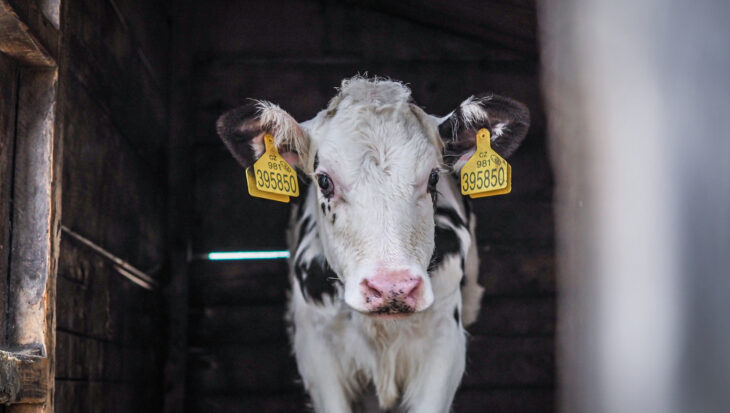The peaceful protests were supported by local campaign group Animal Rights Cambridge. They followed the discovery of a particularly shocking experiment performed on pregnant sheep at Cambridge University, which was supported by the British Heart Foundation (BHF). The disturbing ‘procedure’ involved 12 ewes and their unborn lambs being surgically mutilated, partially suffocated and killed.
The days of action involved leafleting in strategic locations, including outside a major BHF furniture store, close to the laboratory where the experiment was carried out, and in a busy shopping area. Activists were accompanied by Animal Aid’s ‘battle bus,’ a converted ambulance that drove around Cambridge drawing attention to the shocking experiment with a striking banner and video. The response from the public was excellent, with almost 2,000 people taking leaflets, and many engaging in thoughtful discussions. The event was featured in the Cambridge News, and Animal Aid Director Andrew Tyler took part in a debate on BBC Radio Cambridgeshire, which discussed not only the sheep experiment, but also the wider issue of vivisection.
The successful campaign action marked a timely increase in pressure on the BHF. Just weeks earlier, Animal Aid discovered that the major heart charity had given grant support to at least three more experiments on pregnant sheep, each of which was approved by Cambridge University’s ethics committee. Like the experiment that Animal Aid first brought to light, the three experiments involved subjecting ewes and their unborn lambs to invasive surgery in order to insert recording devices. Two of the experiments also saw the unborn lambs deprived of oxygen, either through repeated compression of the umbilical cord, or by using ‘well-established’ protocols.  According to a reference given in the published scientific paper, this called for a polythene bag to be placed over the ewes’ heads and involved forcing them to inhale a gas with a low oxygen concentration. In another disturbing development, an official document obtained by Animal Aid from the Home Office has revealed that the first pregnant sheep experiment we uncovered forms part of a vast research programme scheduled to use up to 4,805 pregnant animals: 3,750 rats and mice, 850 sheep, 125 pigs and 80 ponies.
According to a reference given in the published scientific paper, this called for a polythene bag to be placed over the ewes’ heads and involved forcing them to inhale a gas with a low oxygen concentration. In another disturbing development, an official document obtained by Animal Aid from the Home Office has revealed that the first pregnant sheep experiment we uncovered forms part of a vast research programme scheduled to use up to 4,805 pregnant animals: 3,750 rats and mice, 850 sheep, 125 pigs and 80 ponies.
Members of the public were shocked and upset to find out about such cruel and pointless research, some of which had been carried out on their doorstep and supported by a well-respected medical research charity. The days of action were vital for increasing the level of local awareness, as well as stepping up the pressure on the BHF. We would like to thank Animal Rights Cambridge for their invaluable support.


